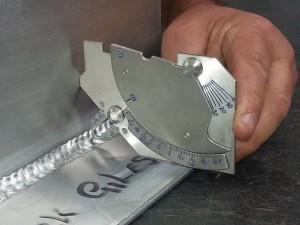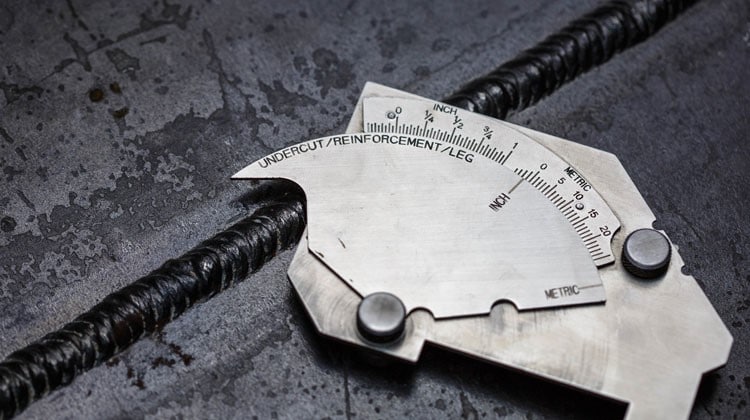Necessary Tips for Successful Welding Inspection Madison Solutions
Necessary Tips for Successful Welding Inspection Madison Solutions
Blog Article
The Importance of Thorough Welding Inspection in Industrial Applications
In the realm of commercial applications, the importance of careful welding assessment can not be overemphasized. As we explore the diverse advantages of attentive welding examinations, one must think about the more comprehensive effects on safety, dependability, and cost-effectiveness in commercial procedures.
Enhancing Structural Integrity
When it comes to welding assessment in commercial applications, enhancing architectural honesty is paramount. The main goal of welding examination is to make certain that the welds are qualified of birthing the anticipated tensions and loads they will certainly encounter in solution.
The importance of keeping architectural integrity in welded frameworks can not be overstated. Improperly carried out welds can cause disastrous failures, causing costly repair work, downtime, and also endangerment of human lives. Assessors play a critical duty in the lifecycle of industrial elements, offering assurance that the welding procedure supplies the preferred stamina and sturdiness.
Additionally, advanced technologies, such as phased range ultrasonic testing and digital radiography, offer boosted capacities in spotting possible weak points, permitting rehabilitative procedures prior to concerns rise. By focusing on the honesty of welds through precise inspection, markets can make certain functional performance and extend the long life of their facilities.
Determining Welding Issues
Recognizing welding flaws is a critical aspect of making certain the security and reliability of bonded structures. These issues can endanger the honesty of the whole setting up and, if left unaddressed, might cause catastrophic failings. Common welding defects consist of porosity, fractures, insufficient blend, and damaging. Each of these flaws occurs from particular causes, such as improper welding techniques, contamination, or insufficient warmth control.

Skilled assessors use both visual evaluation and progressed non-destructive testing (NDT) approaches, such as radiographic or ultrasonic testing, to discover these problems. The prompt identification and rectification of welding defects are essential to maintain the architectural integrity and durability of commercial elements.
Guaranteeing Conformity Requirements
Maintaining the integrity of welded structures extends beyond determining defects; it calls for adherence to strict conformity requirements. Conformity with well established standards, such as those given by the American Welding Culture (AWS) and the International Company for Standardization (ISO), makes certain that welds meet minimum safety and security and top quality needs. These requirements encompass a large range of requirements, including product specs, welding treatments, and certification of welders. Adherence to these standards is critical to avoid structural failures, which could bring about devastating repercussions in commercial applications.
Routine audits and evaluations are vital in confirming conformity. Examiners have to have a detailed understanding of the appropriate standards and be experienced at making use of various non-destructive screening (NDT) techniques to examine weld top quality. By guaranteeing that welding practices line up with conformity requirements, firms minimize the danger of non-conformity, which can cause lawful liabilities and safety dangers.
Additionally, keeping compliance not just safeguards architectural stability however additionally improves a company's credibility in go to my blog the market. Stakeholders and clients are most likely to trust fund companies that regularly demonstrate a dedication to high quality and security via extensive compliance. Therefore, ensuring conformity standards is a crucial part in the effective implementation of welding in industrial applications.
Lowering Maintenance Expenses

The application of advanced non-destructive testing (NDT) methods, consisting of ultrasonic, radiographic, and magnetic bit assessments, boosts the capacity to detect subsurface flaws without compromising the architectural integrity of components. By employing these techniques, industries can dramatically expand the solution life of their equipment, minimizing downtime and the associated financial concern of maintenance tasks.
Moreover, a robust welding evaluation program supports the optimization of maintenance routines, shifting from responsive to predictive maintenance approaches. This proactive technique not just curtails unforeseen failings however also simplifies source allocation, ensuring that maintenance initiatives are concentrated and reliable. Eventually, the investment in strenuous welding evaluation is countered by the significant financial savings recognized via lowered upkeep needs, contributing positively to the overall functional performance of industrial business.
Improving Safety Actions
Although security is an extremely important concern in industrial operations, attaining optimum safety criteria calls for a specialized concentrate on the quality and integrity of welded frameworks. Welding examination plays an essential function in this context, as it makes sure that all connections and joints fulfill strict security criteria. Comprehensive examinations help recognize issues such as cracks, porosity, or incomplete blend that can jeopardize structural honesty. Such defects, if left unaddressed, position significant threats, potentially bring about disastrous failings.
To enhance precaution, adopting advanced non-destructive screening (NDT) methods is vital. Approaches like ultrasonic testing, radiographic testing, and magnetic bit assessment enable comprehensive exam without damaging the framework. These modern technologies allow assessors to detect try this site covert imperfections early in the construction process, helping with timely corrective actions. In addition, applying a robust top quality control system that includes routine training for examiners and welders makes certain adherence to established security requirements.
Finally, promoting a society of safety within the organization stresses the relevance of extensive welding evaluations. Encouraging open communication and partnership amongst welders, examiners, and designers adds to a common dedication to safety quality. Welding Inspection Madison. In doing so, sectors can protect their operations, secure workers, and preserve public trust fund

Final Thought
Comprehensive welding inspection is vital in commercial applications, considerably enhancing find this architectural stability and reliability. Inevitably, the attentive implementation of welding assessments plays a critical role in preserving operational effectiveness and security in industrial setups.
As we discover the diverse advantages of attentive welding assessments, one must think about the wider effects on safety, dependability, and cost-effectiveness in commercial procedures.
The primary goal of welding examination is to make certain that the welds are capable of bearing the expected stresses and loads they will experience in solution. Effective welding inspection plays an essential function in decreasing these costs by making sure the stability and long life of welds, therefore mitigating the threat of premature failings.Thorough welding assessment is essential in commercial applications, significantly improving structural integrity and integrity. Eventually, the thorough execution of welding evaluations plays a crucial role in keeping functional effectiveness and security in industrial settings.
Report this page